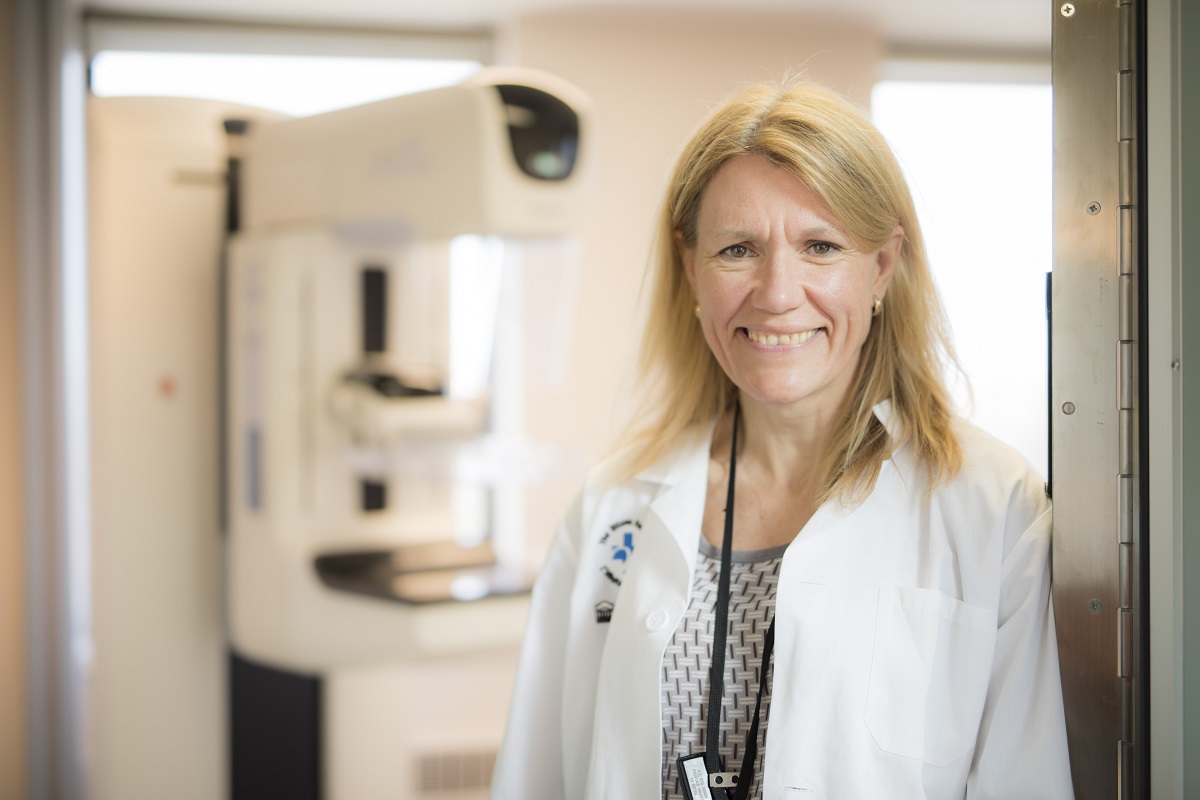
A new study published in the Canadian Association of Radiologists’ Journal shows that Canadian jurisdictions that offer more frequent mammograms to women with dense breasts had fewer cancers diagnosed between screens. The study examined medical records of almost 150,000 women with dense breasts undergoing breast screening across Canada between 2008 and 2010.
“The hope is that this means we’re finding these cancers at an earlier stage, when they’re easier to treat,” said lead author Dr. Jean Seely, radiologist and Head of Breast Imaging at The Ottawa Hospital and professor at the University of Ottawa. “Women with dense breast tissue, particularly those with densest breasts, may benefit from more frequent screening, however, further investigation is needed to understand the balance of benefits and harms.”
Previous research has shown that screening mammograms are not as effective in women with dense breasts because it is harder to detect tumours on a background of dense tissue. Screening is usually done every two years, but some Canadian jurisdictions (Ontario, Saskatchewan, Newfoundland and Labrador, Northwest Territories, PEI, and Manitoba) offer annual screening to women with dense breasts, either routinely or on the recommendation of a radiologist.
The study found that jurisdictions that offer more frequent mammograms to women with dense breasts had fewer cancers diagnosed between screens (9 cancers per 10,000 women screened) compared to jurisdictions with routine screening (15 cancers per 10,000 women screened). Screening policies appeared to have a greater effect than individual radiologists’ recommendations. The study did not look at how often screening uncovered abnormalities that turned out not to be cancer. These ‘false positive’ results can lead to additional testing, stress and cost.
“This is a great example of the screening programs across the country coming together to examine their own data and take advantage of the natural experiment created by having different policies regarding screening and breast density,” said Dr. Craig Earle, Vice-President of Cancer Control with the Canadian Partnership Against Cancer and a co-author on the study. “Further work will be needed to determine whether finding these extra cancers translates into fewer fatal breast cancers, or whether any of the different types of extra screening can improve long-term outcomes and be cost-effective.”
Reference: Breast Density and Risk of Interval Cancers: The Effect of Annual Versus Biennial Screening Mammography Policies in Canada. Jean Morag Seely, MD, Susan Elizabeth Peddle, MD, Huiming Yang, MD, Anna M. Chiarelli, Megan McCallum, Gopinath Narasimhan, Dianne Zakaria, Craig C. Earle, Sharon Fung, Heather Bryant, MD, PhD, CCFP, Erika Nicholson, Chris Politis, Wendie Berg, MD, PhD. First Published July 19, 2021. https://doi.org/10.1177/08465371211027958
Photos: https://www.dropbox.com/sh/pmoagoaiq0wh62o/AAAYBxBC6JBvQ15KRGfdZdSya?dl=0
Media requests:
Paul Logothetis
Media Relations Agent
Cell: 613.863.7221
[email protected]
